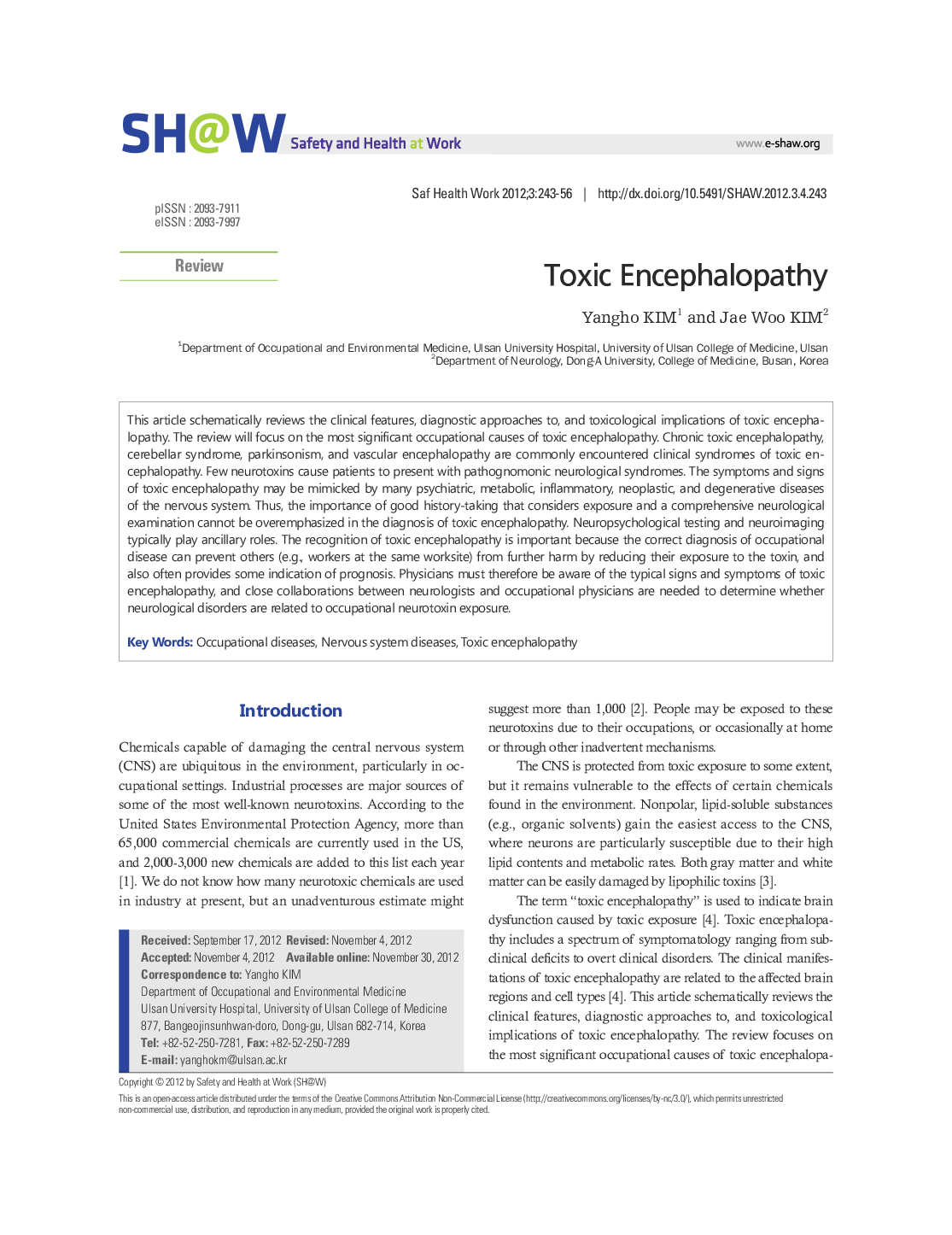| Article ID | Journal | Published Year | Pages | File Type |
|---|---|---|---|---|
| 1092197 | Safety and Health at Work | 2012 | 14 Pages |
This article schematically reviews the clinical features, diagnostic approaches to, and toxicological implications of toxic encephalopathy. The review will focus on the most significant occupational causes of toxic encephalopathy. Chronic toxic encephalopathy, cerebellar syndrome, parkinsonism, and vascular encephalopathy are commonly encountered clinical syndromes of toxic encephalopathy. Few neurotoxins cause patients to present with pathognomonic neurological syndromes. The symptoms and signs of toxic encephalopathy may be mimicked by many psychiatric, metabolic, inflammatory, neoplastic, and degenerative diseases of the nervous system. Thus, the importance of good history-taking that considers exposure and a comprehensive neurological examination cannot be overemphasized in the diagnosis of toxic encephalopathy. Neuropsychological testing and neuroimaging typically play ancillary roles. The recognition of toxic encephalopathy is important because the correct diagnosis of occupational disease can prevent others (e.g., workers at the same worksite) from further harm by reducing their exposure to the toxin, and also often provides some indication of prognosis. Physicians must therefore be aware of the typical signs and symptoms of toxic encephalopathy, and close collaborations between neurologists and occupational physicians are needed to determine whether neurological disorders are related to occupational neurotoxin exposure.
